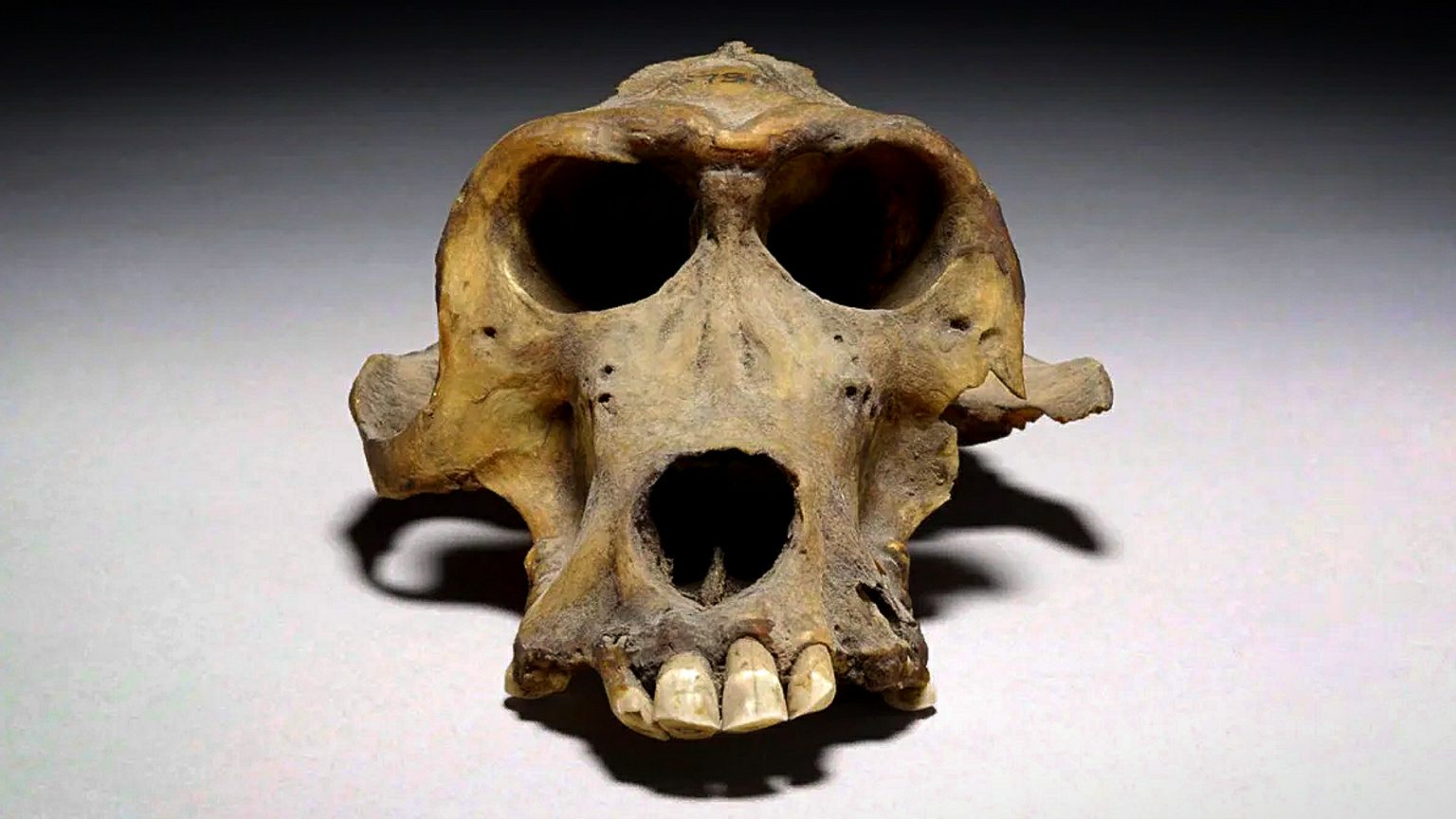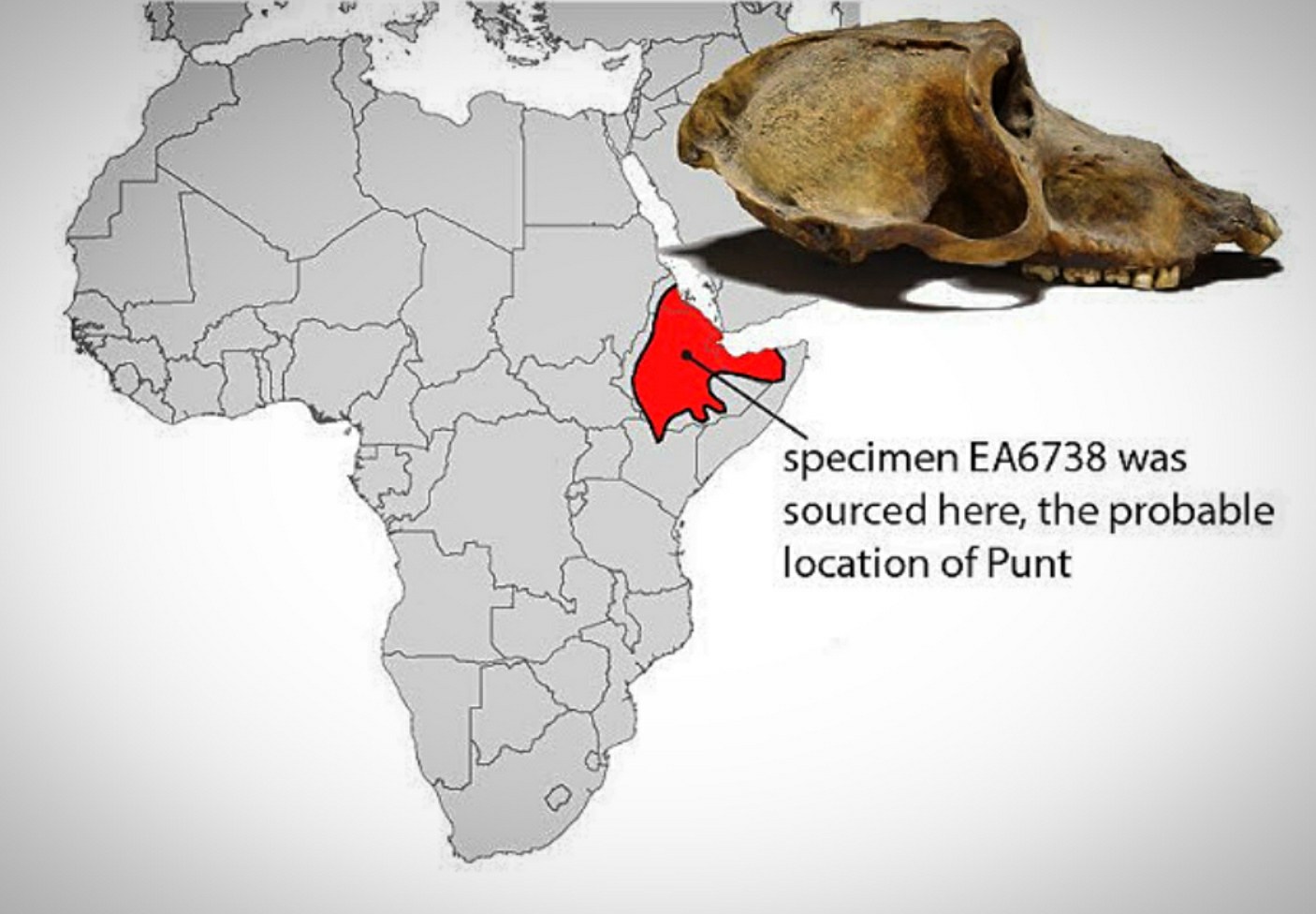The kingdom of Punt was one of the most important luxury goods markets for the ancient Egyptians. The hieroglyphs of the time show that the first expedition to the Land of God, as the sailors called it, dates back to 2500 BC. and was directed by the pharaoh Sahura. The objective of these trips to distant places, which occurred frequently until the end of the Egyptian civilization, was to buy frankincense, myrrh, ivory, leopard skins, precious woods and baboons to use in rituals of worship and worship.

Modern archaeologists have so far not found any evidence to determine with certainty the place of origin of this enigmatic land; it was believed to be somewhere along the coast of the Red Sea, a gulf of the Indian Ocean between Africa and Asia. However, a team of scientists, led by Nathaniel Dominy, a primatologist at Dartmouth University, in the United States, recently discovered two baboon skulls from 3,300 years ago archived in the British Museum that has helped reveal the location of the kingdom of Punt, his work was recently published in the scientific journal Elife.
Dominy tells by mail that the chemical isotopes of the enamel of baboons’ teeth, found in the 19th century in an Egyptian tomb in the city of Thebes, give clues to their birthplace. According to the scientist, the soil and water of a specific region have a distinctive ratio of oxygen and strontium isotopes that is stored in the teeth during the first years of the life of animals and remains unchanged even when they grow and they move to a foreign country.
The researchers compared the isotopes of the two primates found in Egyptian tombs with those of 155 baboons from 77 different locations on the coasts of Africa to estimate their geographic provenance. Thus, Dominy’s team was able to establish that the mummified baboons were not only not originally from Egypt, but were born in the now discovered location of the kingdom of Punt, in the region of present-day Eritrea, Ethiopia and northwestern Somalia. “The research began when we realized that we could use baboons as a prism to investigate the geography of the early maritime trade of the ancient Egyptians,” says the researcher.

The enamel of baboons’ teeth contains isotopes that can identify their place of birth. Dominy states that the research results “are the first to draw a Punt map using empirical data.” His work also challenges scholars of ancient civilizations who have always questioned the nautical skills of early Egyptian sailors. “We found that Egyptian sailors travelled much longer distances than previously believed to buy live baboons,” Dominy concludes.
These primates, sacred to the ancient Egyptians, represented the incarnation of Thoth, one of the gods of wisdom, and symbolized Amun-Ra, the great sun god. According to Dominy, the sounds the baboons make toward the sun at sunrise may explain why they worshipped them. “It is possible that the ancient Egyptians witnessed this natural behaviour of baboons and therefore believed them worthy of veneration,” says Dominy. And he continues: “The baboon statues in Egypt are always facing east, towards the rising sun, with their arms raised. This greeting is a common worship posture in Egyptian religious practices.”
According to the scientific publication, the sacred baboon was a recurring motif in ancient Egyptian art and religion: from predynastic statuettes to mortuary traditions, including wall paintings, reliefs, amulets and statues. Pearce Paul Creasman, an archaeologist at the American Center for Oriental Research, told Science magazine in an interview that Dominy and his team’s find was a “very important step in better understanding this mysterious land that we still don’t fully understand.”
Research by Dominy and his colleagues helps corroborate the written records of a captive baboon program in ancient Egypt. “When we analyzed the isotopes of five other mummified baboons, we discovered that there was a kind of primate farm, probably located in the city of Memphis,” says Dominy.
The researchers agree that long-distance shipping between Egypt and Punt was an important milestone in human history because it fueled the evolution of maritime technology. “The trade-in exotic luxury goods, including baboons, was the engine of the first nautical innovations,” concludes the researcher. The work is also key to better understanding the ancient trade routes that shaped geopolitical fortunes for millennia and highlights the need for further archaeological research in Eritrea and Somalia, two areas currently under-studied.




